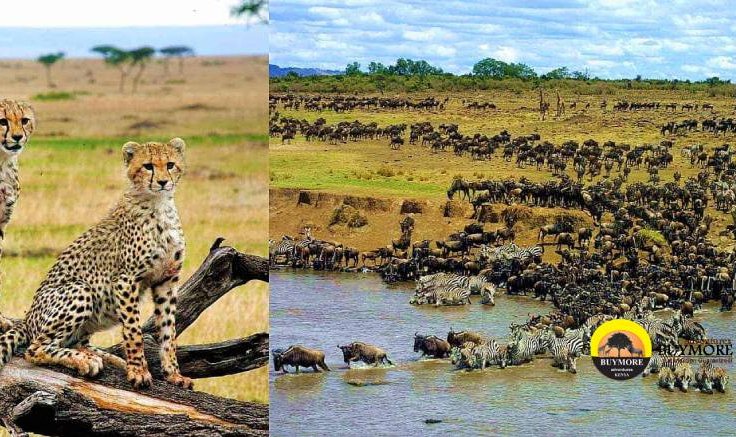Exploring the Thrilling Wildlife Spectacle of Africa’s Great Migration

The Great Migration is one of nature’s most awe-inspiring events, a vast movement of millions of animals across the plains of East Africa. Every year, this remarkable phenomenon captivates wildlife enthusiasts, photographers, and travellers from all corners of the globe. Spanning over 1,800 miles between Kenya and Tanzania, the Great Migration involves wildebeests, zebras, gazelles, and other species across the Serengeti and Maasai Mara ecosystems in search of food, water, and survival. Here's a closer look at why Masai Mara Migration Safari with BUYMORE Adventure is such a thrilling spectacle and what makes it a bucket-list adventure for anyone passionate about wildlife.
The Unpredictable Journey
The Great Migration is not a simple, linear trek. It is a dynamic and unpredictable journey, driven by the seasonal rains and the availability of grazing land. Starting in the Serengeti plains of Tanzania in early spring, the animals move north toward Kenya’s Maasai Mara, where they find better grazing conditions. This trek covers thousands of miles, and the animals face various challenges, including harsh weather, predators, and difficult terrain.
The Thrill of the River Crossings
One of the most thrilling and heart-pounding moments of the Great Migration is the crossing of the Mara and Grumeti rivers. As the herds approach these rivers, they face the peril of crocodile-infested waters and swift currents. The sight of wildebeests nervously preparing to cross, only to be swept away or attacked by crocodiles, is both harrowing and captivating. The predators, including lions, cheetahs, and hyenas, also wait for the opportunity to strike as the herds make their perilous journey across these water obstacles.
An Abundance of Wildlife Encounters
While the Great Migration is awe-inspiring, it also offers the opportunity to witness a wide range of wildlife interactions. As the herds move across the plains, predators like lions and cheetahs are constantly on the hunt, providing rare glimpses of the circle of life in action. Additionally, the migration draws large numbers of scavengers, such as vultures and hyenas, which help clean up the aftermath of predator kills. Visitors to the region may also spot elephants, giraffes, and various bird species, all of which coexist with the migrating herds, creating a truly diverse ecosystem.
Timing the Migration for the Best Experience
The timing of your visit is crucial to witnessing the full spectacle of the Great Migration. While the migration occurs year-round, the best time to witness the dramatic river crossings is during the dry season, typically between June and October. This is when the animals are forced to move in search of water and food, and the river crossings become a focal point of the migration.
Conservation and Sustainable Tourism
The Great Migration also highlights the importance of conservation efforts in protecting these ecosystems. Organizations are working tirelessly to ensure that the migration route remains intact, preserving the rich biodiversity of the Serengeti and Maasai Mara. Responsible and sustainable tourism is key to ensuring the survival of this natural wonder.
The Great Migration is more than just a wildlife event; it’s a breathtaking display of survival, endurance, and the intricate balance of nature. Witnessing this incredible spectacle in person is an unforgettable experience, offering an up-close look at one of the planet’s most remarkable phenomena. Whether it’s the suspense of the river crossings, the stunning views of the migrating herds, or the abundance of wildlife interactions, Africa’s Great Migration is a once-in-a-lifetime adventure for any nature lover.



 +254-20-2325654
+254-20-2325654 info@buymoreadventures.com
info@buymoreadventures.com